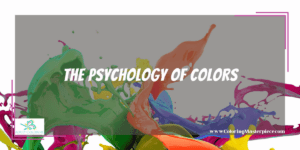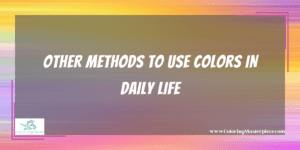Colors can impact emotions, with blues and greens promoting calmness and yellows uplifting spirits in depression. Color therapy complements traditional treatment. Personalize spaces with preferred hues, practice mindful visualization, and explore creative expression through art. Individual responses vary, so choose colors that resonate with you for maximum benefit.
Introduction
Depression affects millions of people worldwide, casting a shadow over their lives. While no one-size-fits-all solution exists, emerging research suggests that colors may impact our emotions and mental well-being. In this article, we will explore the relationship between colors and depression, focusing on how specific hues can potentially help brighten the gloomy clouds of depression. From the calming embrace of blues to the energizing power of yellows, we’ll delve into the psychology of colors and their potential role in supporting those struggling with depression.
To learn how adult coloring books can improve your mood, check out this article.
The Psychology of Colors

Before we dive into the specific colors, it’s crucial to understand the psychology of colors and how they can influence our emotions. Colors can evoke various feelings and sensations, making them essential elements in our daily lives. Warm colors like red, orange, and yellow tend to energize and stimulate, while cool colors like blue, green, and purple create a sense of calmness and relaxation. Understanding the psychology behind colors lays the groundwork for exploring their potential benefits in managing depression.
The Soothing Effects of Blue
Blue, often associated with tranquility, has a calming mental effect. When feeling overwhelmed by the weight of depression, surrounding oneself with shades of blue can provide a sense of solace. Research has shown that exposure to blue hues can decrease stress levels, slow heart rate, and reduce anxiety. Additionally, a blue environment may promote trust and security, which can be exceptionally comforting for those with depressive thoughts.
Embracing the Serenity of Green
Green, the color of nature and renewal, is another color that holds promise in combating depression. Being in nature has long been associated with positive effects on mental health, and green, the dominant color in nature, plays a significant role. Studies have indicated that green environments can lead to improved mood and increased feelings of happiness. Incorporating green into living spaces or spending time in lush, natural settings can be a refreshing escape from the darkness of depression.
Harnessing the Power of Yellow
Yellow is often linked to warmth, happiness, and optimism. It is the color of sunshine and can bring much-needed energy to emotionally drained people. Surrounding oneself with yellow accents or even wearing yellow clothing can help combat feelings of lethargy and despair. However, it’s essential to strike a balance, as an overwhelming presence of yellow may lead to feelings of agitation in some individuals.
Finding Balance with Purple
Purple, a blend of calming blue and energetic red, represents a harmonious balance of emotions. This unique combination makes purple a color that can help individuals find emotional stability. The meditative qualities of purple can promote self-reflection and a sense of introspection, which may be beneficial for those struggling with depression to explore their feelings and thoughts.
Warming Up with Orange
Orange is a color that radiates positivity and vitality. It can stimulate enthusiasm and creativity, helping to break through the lethargy often associated with depression. Incorporating splashes of orange into living spaces or surrounding oneself with orange artwork can encourage a sense of joy and enthusiasm, providing a much-needed boost during tough times.
The Uplifting Effects of Pink
Pink, often associated with love and nurturing, has a soft and gentle nature that can provide comfort and emotional support. For those experiencing loneliness or isolation, being in a pink environment or wearing pink can evoke compassion and connection. This emotional connection can help combat the disconnection often experienced during depressive episodes.
Here are five more colors that can potentially help in managing depression:
- Lavender: Lavender is a gentle and soothing color that combines the calming qualities of blue and the nurturing essence of pink. It promotes relaxation and emotional balance, benefiting individuals experiencing anxiety or restlessness alongside depression. Lavender hues can be incorporated through soft furnishings, decorative accents, or calming aromatherapy scents.
- Turquoise: A blend of calming blue and invigorating green, turquoise represents a refreshing and renewing color. It can inspire hope and positivity, making it an excellent choice for those seeking emotional rejuvenation. Surrounding oneself with turquoise, be it in art, clothing, or interior decor, can uplift the spirit and create a sense of tranquility.
- Coral: Coral is a warm, energetic color that radiates optimism and joy. It can evoke enthusiasm and vitality, which can be particularly helpful for individuals with lethargy or low energy levels associated with depression. Incorporating coral accents in living spaces or personal accessories can inject positivity into daily life.
- Silver: While silver is not a traditional color associated with mood improvement, it can symbolize clarity and intuition. Silver can represent a sense of balance and self-reflection for those struggling with emotional turmoil. Utilizing silver tones in jewelry, decor, or art can remind you to embrace inner strength and personal growth.
- Gold: Gold is a color associated with abundance, wealth, and self-worth. It can inspire feelings of confidence and self-assurance, helping to counteract the feelings of self-doubt and worthlessness often accompanying depression. Introducing gold accents in living spaces or wearing gold accessories can be a visual reminder of one’s inherent value and potential.
Individual responses to colors can vary, and personal preferences are crucial to effectiveness. When exploring the potential benefits of colors in managing depression, paying attention to how specific hues make you feel and adjusting your surroundings accordingly is essential. As you discover which colors resonate with you the most, incorporating them into your life with intention and mindfulness can enhance their positive impact on your emotional well-being.
Other Methods to Use Colors in Daily Life

Let’s explore further methods to use colors in daily life for optimal advantages as we further examine how colors might aid with depression.
1. Color Therapy
Color therapy, or chromotherapy, is an alternative healing practice that uses colors to promote physical, emotional, and mental well-being. Practitioners believe each color corresponds to specific energy centers, or chakras, within the body. By surrounding oneself with particular colors, it’s thought that the corresponding chakras can be balanced, leading to a sense of harmony and improved emotional health.
For instance, blue is often associated with the throat chakra, linked to communication and self-expression. By incorporating shades of blue through decor, clothing, or even meditation practices, individuals may find it easier to express their feelings and thoughts, reducing emotional suppression, which is familiar in depression.
2. The Power of Art and Creative Expression
Art therapy is another powerful tool that harnesses the potential of colors to support mental health. Engaging in artistic activities, such as painting, drawing, or coloring, can be immensely therapeutic for individuals with depression. Creating art allows self-expression and serves as a healthy outlet for emotions that might otherwise be difficult to communicate. Colors chosen during art creation can also reflect one’s emotional state and provide insight into feelings.
Moreover, art therapy encourages mindfulness, where individuals become fully present in the moment, helping to alleviate rumination and negative thought patterns often associated with depression.
3. Personalizing Living Spaces
The environment we live in can significantly impact our mood and mental well-being. Personalizing living spaces with colors that resonate with us can create a sense of comfort and support during challenging times. Consider incorporating colors that evoke positive emotions into your home decor, such as soothing blues in the bedroom, invigorating yellows in the kitchen, or calming greens in the living room.
Personal items with meaningful colors can also remind of positive experiences and cherished memories, fostering a sense of gratitude and contentment.
4. Seasonal Affective Disorder (SAD) and Light Therapy
Seasonal Affective Disorder (SAD) is a type of depression that occurs during certain seasons, typically in the fall and winter when there is less natural sunlight. Light therapy, often called phototherapy, is a standard treatment for SAD. During light therapy, individuals are exposed to bright light, typically mimicking natural sunlight. Light exposure can trigger a positive response in the brain and alleviate symptoms of depression.
Choosing lightboxes with adjustable color temperatures allows users to experiment with different hues, such as warm tones in the morning and cooler tones in the afternoon, catering to individual preferences and circadian rhythms.
5. Mindful Color Visualization
Incorporating mindful color visualization exercises into daily routines can be a simple yet effective way to reap the benefits of colors. During moments of stress or anxiety, take a few minutes to close your eyes and imagine being surrounded by your favorite color or a hue that brings you comfort. Visualize this color enveloping you, washing away negativity, and infusing you with positive energy.
This practice can be beneficial when you cannot physically surround yourself with specific colors, such as during travel or work.
6. Social Interaction and Colorful Connections
Colors can also play a role in social interactions and support systems. Friends and family members can be encouraged to wear colors that are particularly uplifting or comforting to the individual experiencing depression. This gesture can create a sense of camaraderie and support, fostering an environment of understanding and empathy.
Additionally, community spaces and support groups can utilize colors in their decor to create a welcoming and encouraging atmosphere for those seeking help and understanding.
To learn about using colors to combat anxiety and depression, check out this article.
Summary
While colors alone cannot provide a definitive cure for depression, they undoubtedly offer a complementary approach to managing its emotional challenges. Incorporating colors into our surroundings, creative expressions, and self-care routines can contribute to a more positive and uplifting environment. As we continue to research the powerful effects of colors on our emotions and mental health, it’s essential to remember that depression is a complex and multifaceted condition that may require professional treatment and support. Seeking therapy, talking to loved ones, and prioritizing self-care are essential components of a comprehensive approach to managing depression. The exploration of colors in this context opens up exciting possibilities for self-discovery, healing, and finding strength in the face of adversity. As we embrace the beauty and power of colors, let us also remember to embrace ourselves and our journeys with empathy, kindness, and resilience.
The information provided by ColoringMasterpiece.com (“The Site”) is for general informational purposes only. All information on the Site is provided in good faith, however, we make no representation or warranty of any kind, express or implied, regarding the accuracy, adequacy, validity, reliability, availability, or completeness of any information on the Site. Under no circumstance shall we have any liability to you for any loss or damage incurred due to the use of the Site or Reliance on any information provided on the Site. Your use of the Site and reliance on any information on the Site is solely at your own risk. This blog post is for educational purposes and does not constitute legal advice. Please consult a legal expert to address your specific needs.

